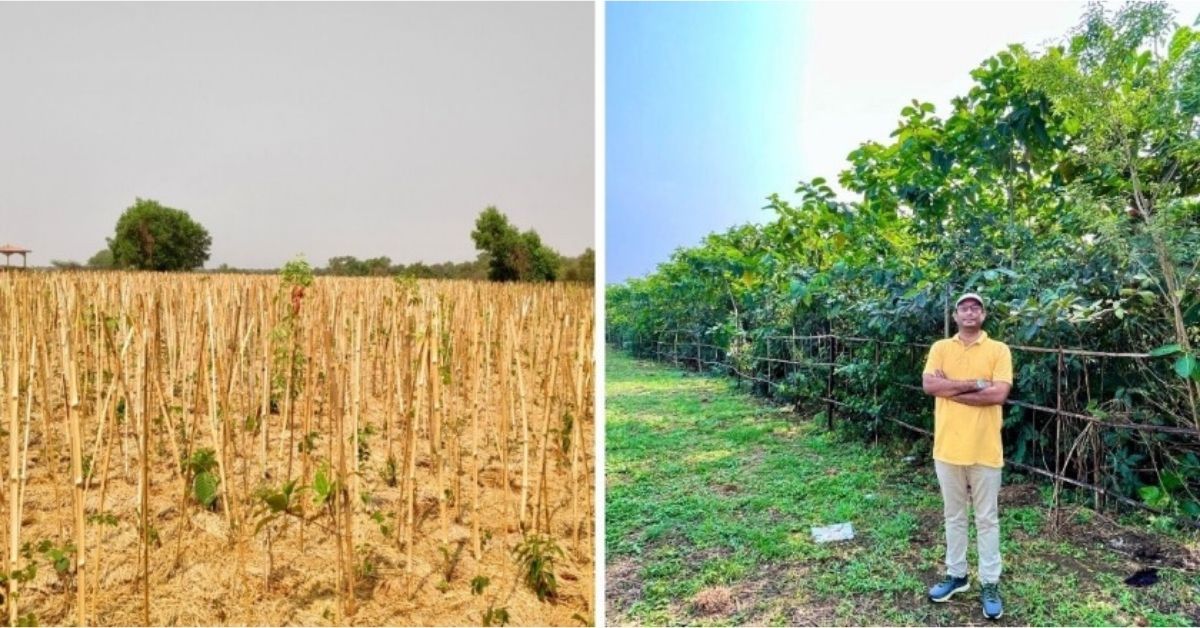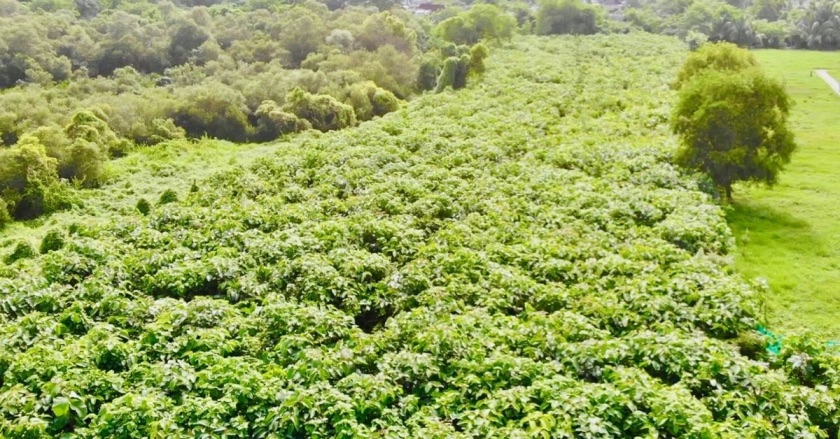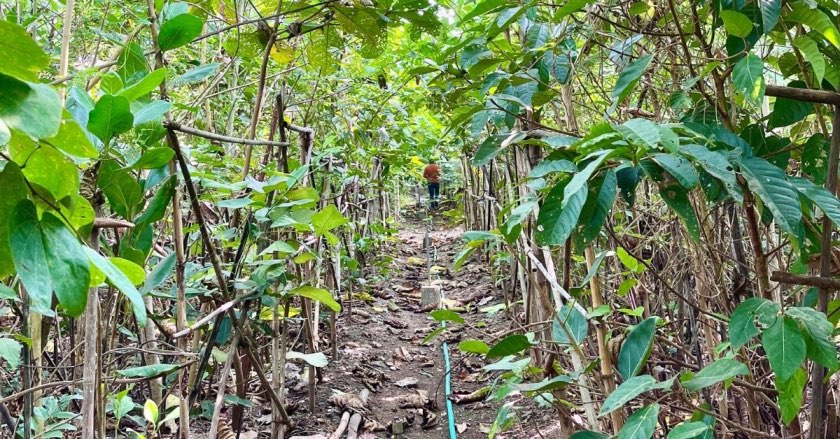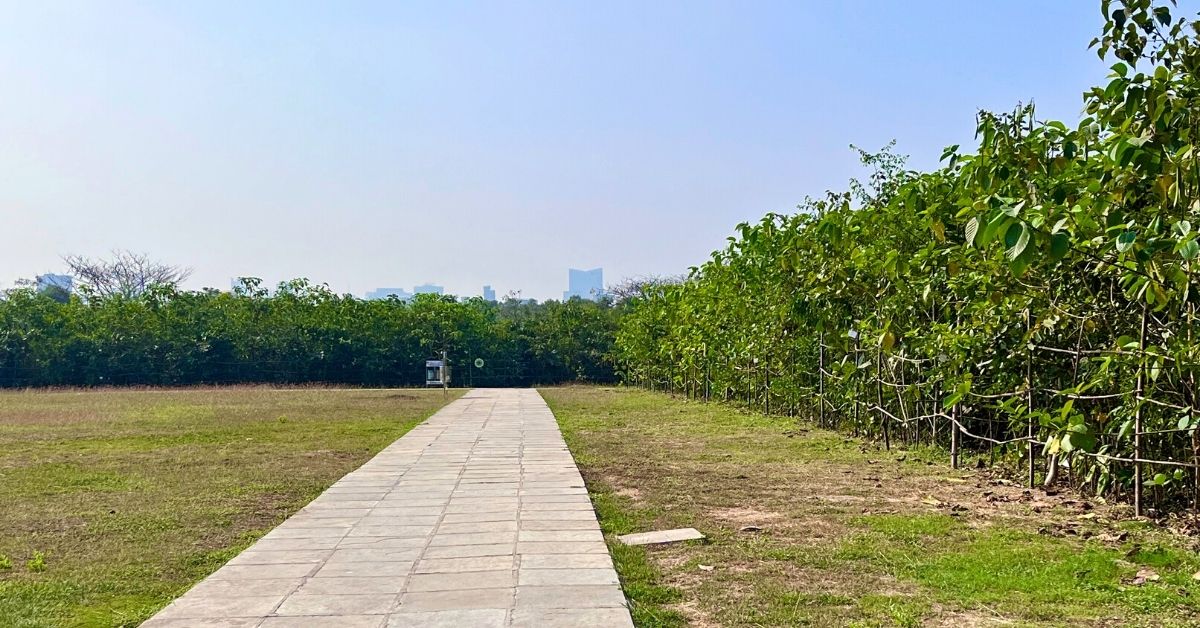IAS Officer Converts Dumpyard Into City’s Green Lungs With 60,000 Trees in Just a Year
Civic chief at Navi Mumbai Municipal Corporation, Abhijit Bangar, has converted 3-acres of land in Navi Mumbai into a green oasis that has attracted biodiversity, including snake species, butterflies, birds and more

If you happened to visit this particular site in Kopar Khairane of Navi Mumbai anytime before 2021, you wouldn’t be able to breathe without taking in the stench of the dumping ground.
Cut to 2022, the same land is now sprawling with thousands of lush green trees growing 15-20 feet tall, and attracting biodiversity.
The quick transition of the space from a wasteland to a 3-acre mini-forest is all thanks to the Miyawaki forest technique adopted by IAS officer Abhijit Bangar, civic chief at the Navi Mumbai Municipal Corporation (NMMC).
An evergreen ‘representation’

“We wanted to create an urban forest to increase the greenery in the city. But the majority of the cities face the same issue – lack of space. During my previous posting in Nagpur, we had initiated a similar project to develop the Miyawaki forest in a dump yard. The project was executed by roping in Green Yatra, a Mumbai-based NGO. Using prior experience, we decided to rope in the NGO for another project to develop a Miyawaki forest in Navi Mumbai,” he tells The Better India.
Abhijit chose a large area which was situated adjacent to the creek and sewage treatment plant (STP). “We decided to use the recycled water from STP to water the plants. Moreover, the site being close to the creek would pose less disturbance to the biodiversity and connect to the mangrove vegetation alongside,” he explains.
Speaking about executing the project, Pradeep Tripathi, one of the founders of Green Yatra, says, “When we visited the site, it had cloth, plastic, construction debris and other foreign material. But the Miyawaki forest technique requires clean soil and is not adulterated with any waste. Moreover, the soil had hardened with years of waste piled up and had chemicals mixed with it. However, finding land in the city is not easy, and so we decided to accept the challenge and develop it into a forest.”
He adds, “We were uncertain if the saplings would survive and attain health growth. But our prior experience of working on a similar project in Nagpur gave us the confidence to take this step. We then decided to treat the soil at the dump yard to make it suitable for creating a Miyawaki forest.”
The high-density tree plantation method enables the fast growth of trees in a short period.
The technique involves digging the one-metre ground and conducting biological, physical and chemical soil testing to understand its nutritional value. The testing also reveals the texture and organic content of the soil. “Accordingly, biomass is prepared using coco peat, compost, soil, perforate and water retainer to provide the necessary nutrition to the soil. The mixture is then spread on the soil and layered for the plantation,” Pradeep says.

This plantation requires two years of maintenance, after which it becomes a self-sustained entity. He says a lot of effort and time was invested in making the soil ready for the plantation.
Pradeep also says the volunteers made environmentally-sensitive decisions while planting the trees. “We didn’t want to visit a nursery, find native trees and plant them randomly on this land. A forest survey was conducted from neighbouring areas to identify the species native to the region. The saplings were classified into four categories: tree, sub-tree, canopy and shrub. The forest has a representation of all the above varieties of plant species,” he notes.
Pradeep says over 60 plus tree species were shortlisted, which included 17 per cent of the trees offering a wide canopy, while 43 per cent of the plantation comprised the tree category. The remaining 30 per cent and 10 per cent included sub-trees and shrubs, respectively. The NGO chose species including amla (Indian gooseberry), lemon, neem, jamun, mangoes, the flame of the forest, teak, Indian almond, black catechu and others for plantation.
“We made a combination of different trees representing an evergreen forest. The saplings were also planted, considering they attract birds for food and host other biodiversity elements. We used organic and natural materials to increase the fertility of the soil,” Pradeep adds.
Pradeep says 60,000 saplings were planted across the land, comprising 40,000 trees in the first phase, followed by 20,000 in the second. A renowned music company provided CSR funds for the project and spent 18,000 hours of labour to create the mini-forest.
“To our surprise, the majority of the trees survived and showed exponential growth within a year, attracting 35 bird species, 15 butterfly and insect species including bees, millipedes, centipedes, snails, 12 snake species, and even a golden jackal,” he says.
Abhijit says some species have started breeding in the forest area. “There is less disturbance, and the breeding activity indicates that animals find it safe to reside in the area,” he says.

Today, the green paradise serves as an oxygen hub for the residents while keeping the local temperatures low.
Saumyadipta Chakravarty, a resident of Vashi, says, “I pass through the forest while commuting to work and enjoy the slightly cooler temperatures. I also take a walk during weekends as it enables me to absorb a piece of nature while living in the concrete jungle.”
Besides, the NGO has also tied up with other local organisations to develop Miyawaki forests in Delhi, Nagpur, Pune, Bengaluru, Gurugram, Delhi NCR and others. “We have planted seven lakh trees across these cities, and plan to identify more areas to develop such forests. The organisation also has started projects in Madhya Pradesh and Gujarat,” Pradeep says.
On a concluding note, Abhijit says, “The success of the forest shows that such green zones can be created in urban spaces too. We aim to create more Miyawaki forests and plan to develop another with 80,000 trees under the anvil. Such small biodiversity pockets are vital for the environment and help us contribute our bit to the environment,” he
Edited by Yoshita Rao
If you found our stories insightful, informative, or even just enjoyable, we invite you to consider making a voluntary payment to support the work we do at The Better India. Your contribution helps us continue producing quality content that educates, inspires, and drives positive change.
Choose one of the payment options below for your contribution-
By paying for the stories you value, you directly contribute to sustaining our efforts focused on making a difference in the world. Together, let’s ensure that impactful stories continue to be told and shared, enriching lives and communities alike.
Thank you for your support. Here are some frequently asked questions you might find helpful to know why you are contributing?


This story made me
- 97
- 121
- 89
- 167











